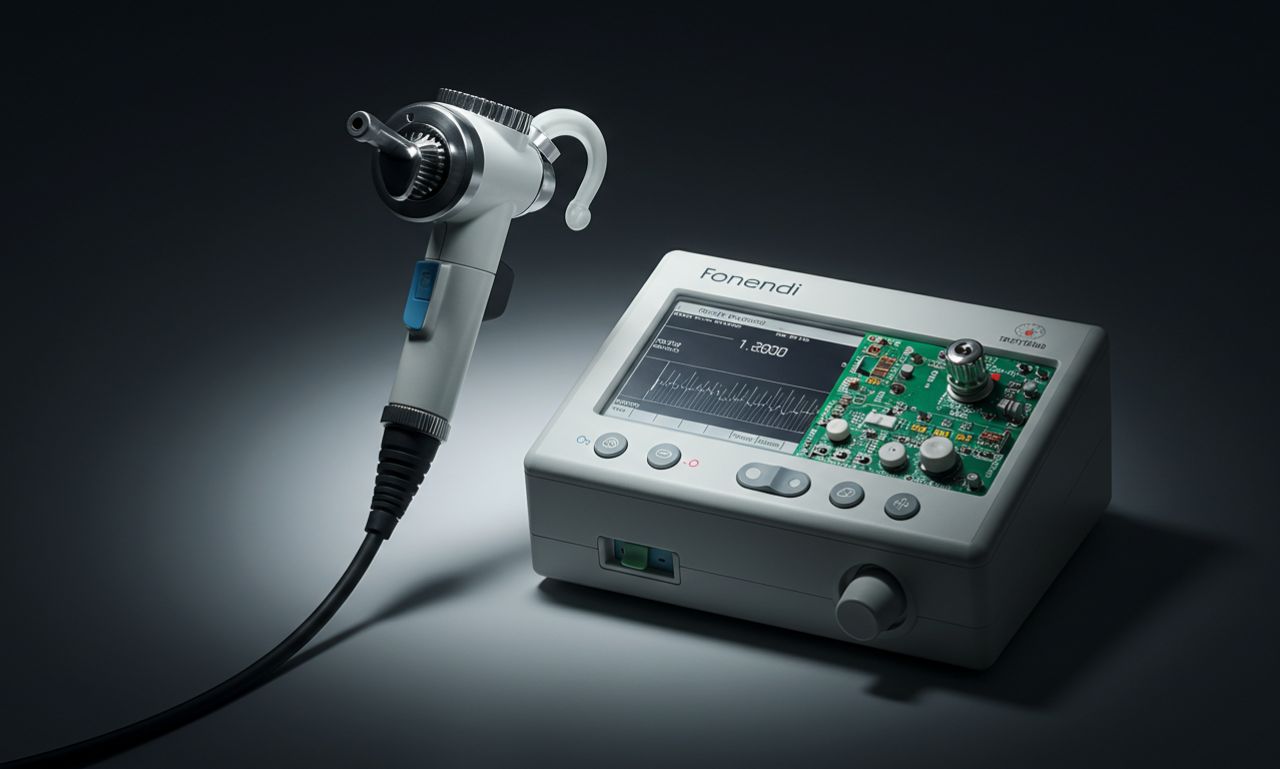The Fonendi: Essential Tool for Internal Sound Diagnosis continues to be a mainstay in the medical world despite technological advancements. This simple yet effective instrument enables practitioners to listen to the body’s internal sounds—heartbeats, lung airflow, and even bowel movements—without invasive procedures.
Whether in busy urban hospitals or small rural clinics, fonendi remains a first-line tool for rapid assessments. It is valued not just for its accuracy but also for its ability to provide instant feedback. Medical professionals rely on it for early detection of conditions, monitoring recovery, and guiding treatment decisions.
The History of Fonendi
Derived from the Greek words for “sound” (phone) and “inside” (endo), fonen-di describes the practice of hearing internal sounds. Its earliest versions were little more than hollow tubes, yet they revolutionized diagnosis.
By the 19th century, design refinements led to better sound transmission. In the 20th century, acoustic technology and durable materials made fonendi a trusted companion for doctors everywhere. Even as digital options emerged, the traditional fonen-di retained its appeal for reliability and tactile connection with the patient.
How Fonendi Works
Fonendi is built on straightforward acoustics. Its components—chest piece, tubing, and ear tips—work together to capture and transmit body sounds.
The chest piece usually offers two listening options:
-
Diaphragm: Best for high-frequency sounds such as heart murmurs.
-
Bell: Ideal for low-frequency sounds like certain vascular or intestinal noises.
When the chest piece is placed against the skin, vibrations from internal organs travel through the tubing to the practitioner’s ears, allowing immediate interpretation.
Medical Uses
The applications of fonendi are wide-ranging:
-
Cardiology: Detects murmurs, irregular rhythms, and valve defects.
-
Pulmonology: Identifies wheezing, crackles, or reduced breath sounds.
-
Gastroenterology: Monitors bowel activity and detects abnormalities.
-
Pediatrics: Assesses respiratory and cardiac health in children.
Because it’s portable and easy to use, fonendi is especially valuable in emergency care and community health programs.
Benefits of Using it
The continued use of fonendi is supported by several advantages:
-
Instant results – No waiting for lab reports.
-
Non-invasive – No discomfort for the patient.
-
Portable – Easy to carry anywhere.
-
Cost-effective – Affordable compared to imaging technology.
Its reliability and affordability make fonendi indispensable, particularly in resource-limited environments.
Skills Required for Effective Use
Fonendi is only as effective as the skill of the user. Auscultation—the art of listening to the body’s internal sounds—demands training and practice.
Factors that can affect interpretation include:
-
Background noise in the examination area
-
Patient movement or positioning
-
The examiner’s hearing ability
Experienced practitioners can distinguish between subtle sound differences, making their diagnoses faster and more accurate.
Fonendi vs. Electronic Stethoscopes
While electronic stethoscopes offer sound amplification, recording, and AI analysis, traditional fonen-di still has clear advantages:
-
Works without batteries or power
-
Durable in harsh conditions
-
Simple to use without calibration
For many doctors, the decision is not either/or—both tools serve different purposes, with fonen-di favored for quick, reliable checks.
Maintaining Fonendi for Accuracy
To keep fonendi effective:
-
Clean regularly to prevent infection spread.
-
Inspect tubing for cracks or wear.
-
Replace diaphragms when sound clarity drops.
A well-maintained fonen-di can provide years of dependable service.
The Future of Fonendi
While medical technology advances rapidly, fonendi is not becoming obsolete. Instead, hybrid models combining acoustic reliability with digital enhancements are emerging. These may feature Bluetooth transmission, noise filtering, and data storage, giving practitioners more diagnostic options without losing the simplicity of traditional design.
As long as medical education values hands-on diagnostic skills, fonen-di will remain in every practitioner’s toolkit.
Conclusion
Fonendi is a prime example of how a simple device can have a lasting impact. It bridges the gap between traditional practice and modern needs, offering reliability, affordability, and precision in one lightweight package. In a field often driven by high-tech innovations, fonendi reminds us that sometimes the most effective tools are those that let a skilled ear do the work.
